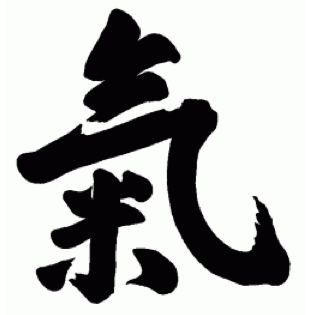7 Things About Kokikai Aikido That Sensei Doesn't Want You To Know
Most people in Kokikai Aikido have a few misconceptions. Here are some of the facts.
1. Sensei's English is very good.
In class, Sensei will often recite a poetic phrase or metaphor in Japanese, and will ask someone who speaks Japanese to translate it. Invariably they can't. Then he'll provide a perfect translation. Or sometimes he'll say "Please, how do you say 'resist'?" These are teaching techniques. Think of it as a little performance, to help you remember his point. Sensei's English is in fact excellent.
2. Sensei's high-ranked students are very strong.
Often Sensei will ask a high-ranked student to try to throw another high-ranked student. Usually they can't. Don't make the mistake of thinking this is because the student's aikido is not good, or that Kokikai "doesn't work" until you reach Sensei's level. Remember: not only is the high-ranked nage strong, the high-ranked uke has been trained in Kokikai, too.
To make it even more challenging, Sensei has hand-picked a group of ukes, and taught them specific ways to resist Kokikai techniques. He encourages some of them to lift weights. He spends extra time with them, practicing ways that they can resist, and then figures out how to throw them anyway!
Actually we're all pretty strong, not just the high-ranked students. Even students who have only practiced for a short time have learned to coordinate mind and body so they are much stronger. Don't sell yourself short (keep your positive mind)!
3. A lot of growth in technique can come from not practicing technique!
We practice ki exercises at the beginning of every class. That's just one example of how we can increase our strength in ways apart from practicing technique. Some other ways to improve your technique without practicing technique include: practice breathing exercises, practice good posture or keeping one point even off the mat, or even work to relax your face.
4. It's not about the strong guys.
Sometimes people go to camp and see that big, strong uke are being called up to the front of class, and they think Kokikai Aikido is only for big strong guys. But of course, Sensei has said many times that he weighs only 129 lbs., and "if I can, you can!" Remember: the big strong guys are the attackers. If you notice, Sensei is tossing them like pickup sticks. (I wrote about this idea in a couple of other posts...)
5. Hard falls are not always harmless.
There are a lot of good reasons why we take pains to train students to fall safely. There has been more and more in the news about the dangers of concussion. The huge majority of falls in Kokikai are 100% safe. But once in a while people do get thrown hard enough that their head is shaken, perhaps by an over-zealous nage or in a demonstration. Please be careful and learn about concussions! You don't have to hit your head or lose consciousness to have one and you should take them seriously.
6. Hard throws are not necessary.
Great news! You can rest assured you don't have throw hard to throw effectively. Why? Because the throw is effective when uke loses balance. It's after that point that you can decide whether to throw hard or soft. Sensei often says he throws beginners and experienced people exactly the same way. This is the same idea. Everything that comes after you lose balance is just like, well...extra hot sauce.
7. Those guys that wrestled each other in the front of class? They "lost" in the first microsecond.
See #6 above. When Sensei throws, it feels like nothing, until it's too late! Once you feel like you're wrestling you may as well start over - using muscle is just going to reinforce the feeling of doing it incorrectly.
Apology:
I've said Sensei doesn't want you to know these things but of course he does! He has dedicated his life to developing and teaching this martial art, and he takes the growth and safety of every student very seriously. He says it and I know it is true .So I hope you don't mind a little humor.




Comments
Post a Comment